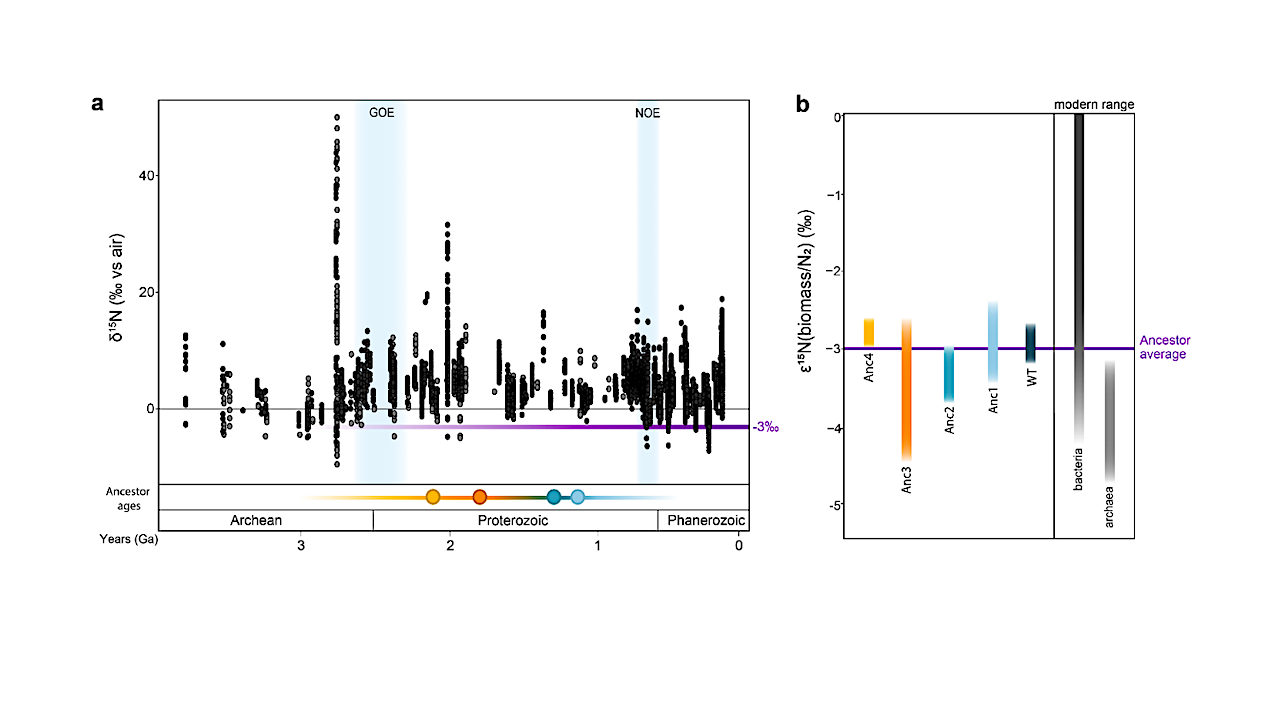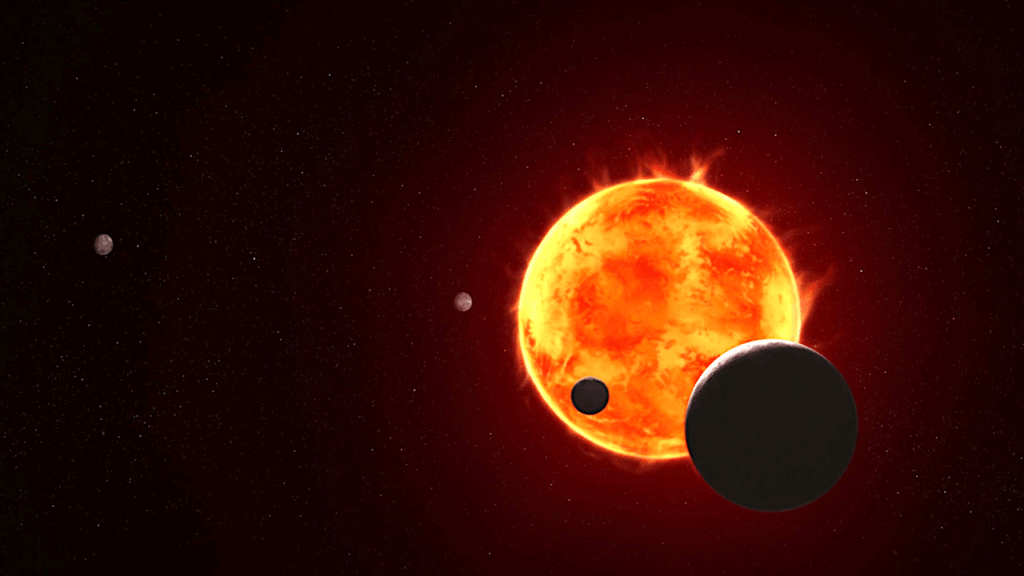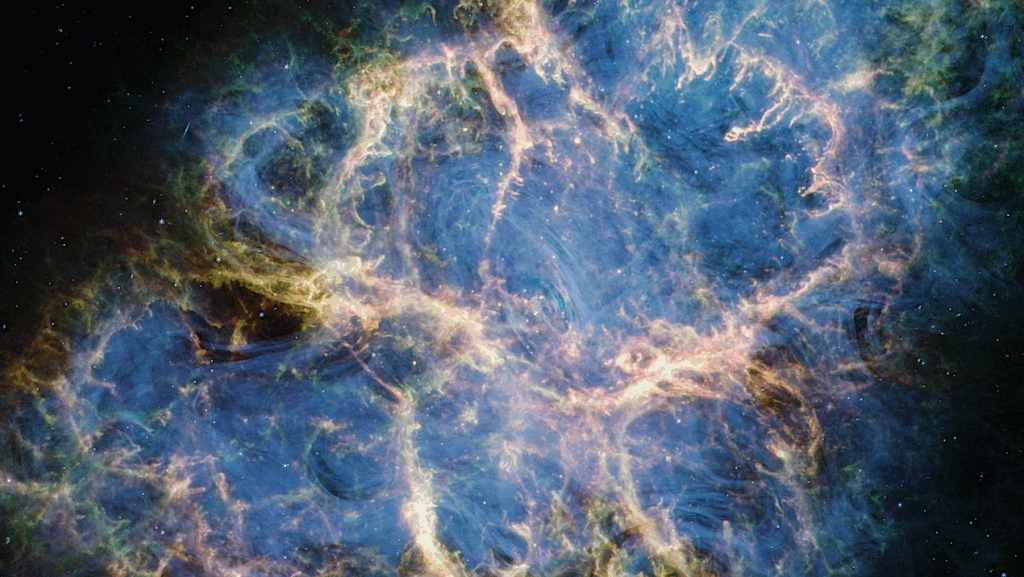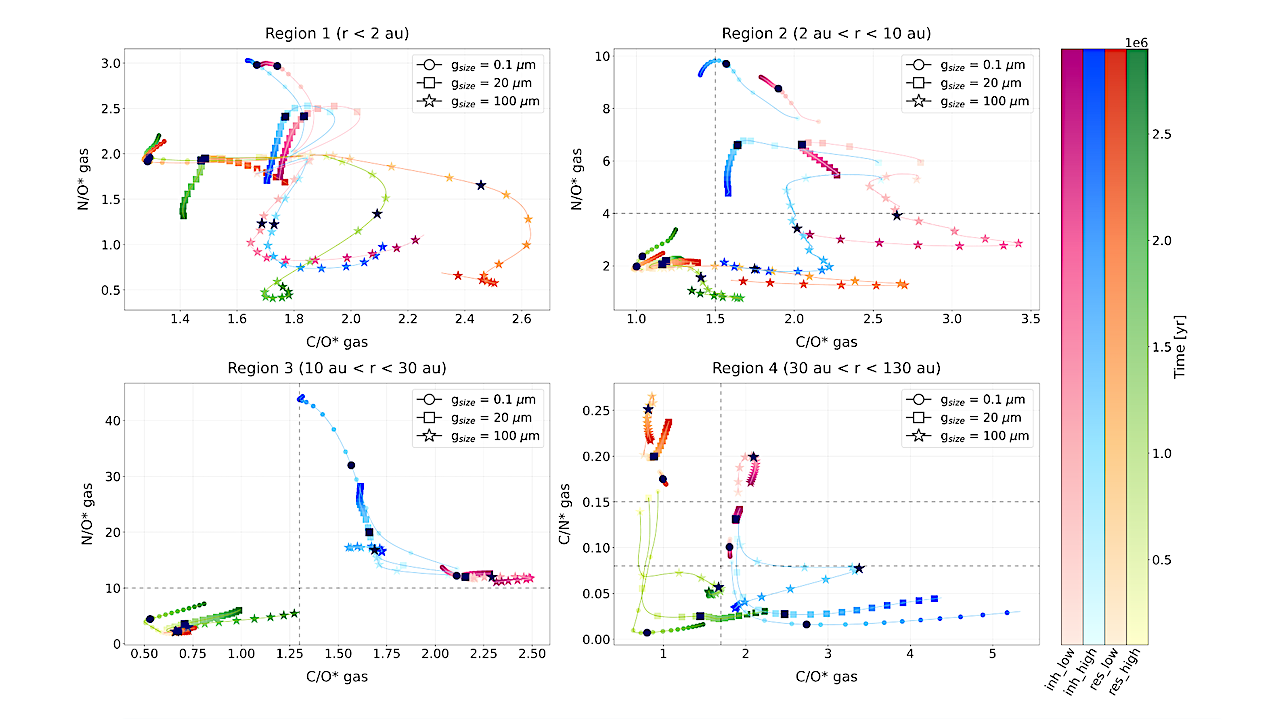Now Reading: Persistent Nitrogenase Isotope Signatures Over Two Billion Years Of Engineered Evolution
-
01
Persistent Nitrogenase Isotope Signatures Over Two Billion Years Of Engineered Evolution
Persistent Nitrogenase Isotope Signatures Over Two Billion Years Of Engineered Evolution


N-isotope fractionation values observed in this study compared to the sedimentary δ15N record a, and known ranges of extant microbial biomass b, The sedimentary database includes bulk rock δ15N (dark grey) and kerogen δ15N (light grey), from both marine and nonmarine rocks across a range of very low to moderate metamorphic grades22,39,40. The purple bar in a and b represents the average fractionation signature of all ancestors in this study and is largely coincident with the minimum d15N values seen in the rock record which are presumed to record nitrogen-fixation unaffected by subsequent nitrogen cycling. The partial range of bacterial and fractionation signatures are labeled as the modern range of N-isotopic values41 (see Figure S3 for extended range). — biorxiv.org
Nitrogen isotope fractionation (ε15N) in sedimentary rocks has provided evidence for biological nitrogen fixation, and thus primary productivity, on the early Earth.
However, the extent to which molecular evolution has influenced the isotopic signatures of nitrogenase, the enzyme that catalyzes the conversion of atmospheric nitrogen (N2) to bioavailable ammonia, remains unresolved.
Here, we reconstruct and experimentally characterize a library of synthetic ancestral nitrogenase genes, spanning over 2 billion years of evolutionary history. By engineering modern microbes to express these ancient nitrogenases, we assess the resulting ε15N values under controlled laboratory conditions.
All engineered strains exhibit ε15N values within a narrow range comparable to that of modern microbes, suggesting that molybdenum (Mo)-dependent nitrogenase has been largely invariant throughout evolutionary time since the origins of this pathway.
These results confirm the robustness of N-isotope biosignatures in the ancient rock record and bolster their utility in the search for life in extraterrestrial environments.
Persistent nitrogenase isotope signatures over two billion years of engineered evolution, biorxiv.org
Astrobiology
Stay Informed With the Latest & Most Important News
-
 012024 in Review: Highlights from NASA in Silicon Valley
012024 in Review: Highlights from NASA in Silicon Valley -
 02Panasonic Leica Summilux DG 15mm f/1.7 ASPH review
02Panasonic Leica Summilux DG 15mm f/1.7 ASPH review -
 03How New NASA, India Earth Satellite NISAR Will See Earth
03How New NASA, India Earth Satellite NISAR Will See Earth -
 04And Thus Begins A New Year For Life On Earth
04And Thus Begins A New Year For Life On Earth -
 05Astronomy Activation Ambassadors: A New Era
05Astronomy Activation Ambassadors: A New Era -
06SpaceX launch surge helps set new global launch record in 2024
-
 07From Polymerization-Enabled Folding and Assembly to Chemical Evolution: Key Processes for Emergence of Functional Polymers in the Origin of Life
07From Polymerization-Enabled Folding and Assembly to Chemical Evolution: Key Processes for Emergence of Functional Polymers in the Origin of Life





















